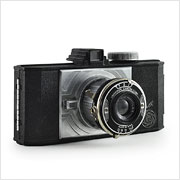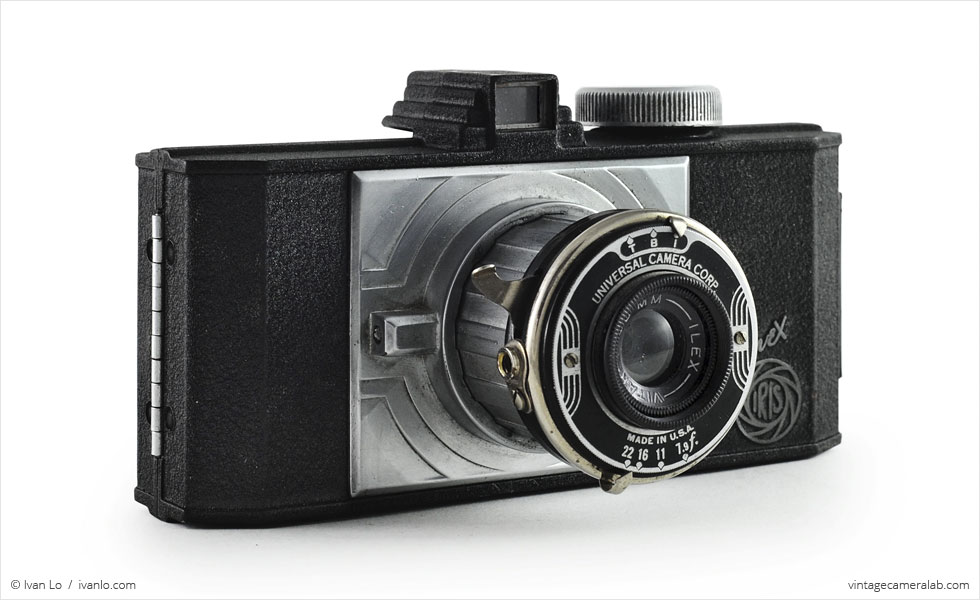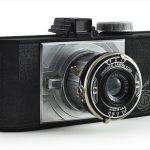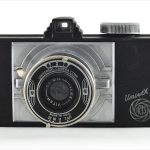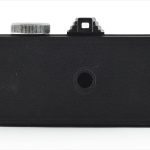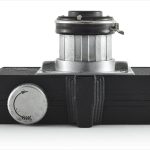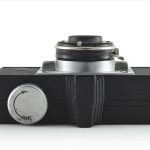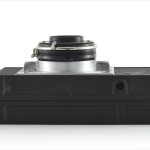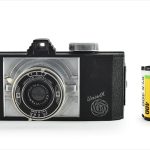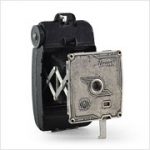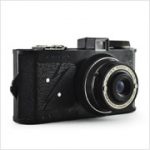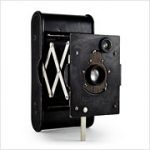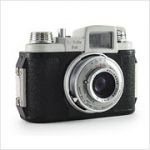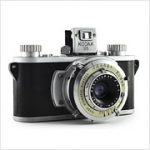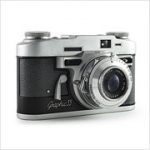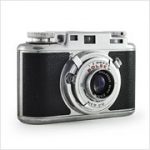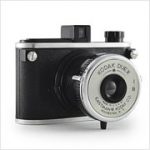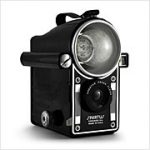Univex Iris Specifications
| Manufacturer: | Universal Camera Corp. |
| Origin: | USA |
| Made in: | New York City, NY, USA |
| Introduced: | 1938 |
| Type: | Viewfinder |
| Format: | No. 00 Universal Film |
| Dimensions: | 13 x 6.8 x 5.5 cm (closed) |
| 13 x 6.8 x 7.1 cm (open) |
Univex Iris Overview
The Univex Iris is a relatively high-end metal viewfinder camera debuted in 1938 by the Universal Camera Corporation. Universal employed a “razor and blades” approach to their products which means that, like all Univex cameras manufactured up to this point, the Iris can only be used with Universal’s proprietary film. This initially ingenious strategy became a massive liability when Gevaert–the Belgian firm that produced film on Universal’s behalf–was soon forced to cease production because of World War II.
The Iris comes equipped with a telescoping fixed-focus 50mm f/7.9 lens, art deco styling, and a solid metal body. At the lens’ 12 o’clock position is the tab to select one of three shutter speeds–Time (shutter opens with first push and closes with the second), Bulb (shutter stays open as long as the button is depressed), and “Instant”–and the aperture selector is at six. The shutter button is located at 10 o’clock and the threaded cable release socket is at nine.
Layout wise, the rest of the Univex Iris is quite simple. A frame advance knob sits on the top plate of the camera next to the optical viewfinder, the latch for the film door is found on the user’s left-hand side of the camera. A red window (missing on this example) is on the back and a 1/4 inch tripod socket is on the bottom. Interestingly, the interior of the camera includes a cavity next to the takeup spool where users can store a spare roll of film. Newer versions of the Iris featured a cold shoe and a more ergonomic shutter button while the deluxe model also featured a chrome and leatherette covered body. Last but not least, the Iris-based Univex Zenith had a lightweight aluminum body and a non-telescoping, focusable 50mm f/4.5 lens.
I purchased this Univex Iris online after watching auctions for about three years waiting for the right price. The art deco styling coupled with my soft spot for Univex cameras made it a must-have for me. This example is in very good mechanical and cosmetic condition with the only real flaws being the missing plastic in the red window and a few scuffs here and there.
Find your very own Univex Iris on eBay.
McKeown, James M. and Joan C. McKeown’s Price Guide to Antique and Classic Cameras, 2001-2002. (Grantsburg, WI, USA: Centennial Photo Service, 2001), p 646.
